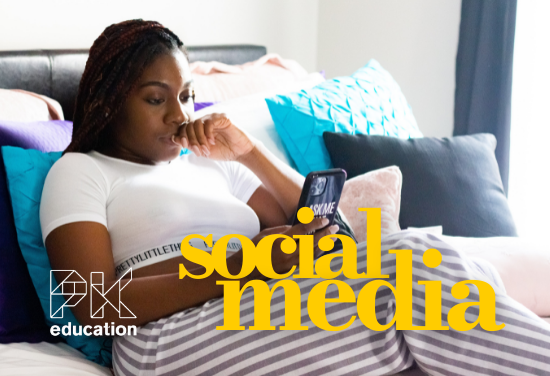We know that the internet, including social media platforms, can be a fantastic learning resource and tool to empower students to develop independence. The reality outside of your classroom, perhaps, is that young people are spending hours on smartphones consuming – and creating – content that likely has nothing to do with your lesson! This isn’t all bad; we need to appreciate the digital age within which our current students exist. In fact Gen-Z have been using social media as a force for positive change in our world; need we mention Black Lives Matter and Climate Justice?! However, according to research, many young people feel pressured to overshare private information online and are not aware of how their own data is used; this alone should create a real need to embed internet safety into the curriculum.
This month we’re been thinking about children’s mental health and wellbeing and, with Safer Internet Day next week, we want to equip educators to have helpful conversations around social media use with students. Let’s be real though, young people are not going to want to open up about every detail of their lives online – nor would you want to know! But, if it’s our duty to safeguard young people, then it’s our responsibility to ensure they are equipped to use the internet safely if we know there are risks to their wellbeing or safety.
The Good Childhood Report found ‘significant association’ between ‘frequency of media activities’ and a child’s well-being, even at the age of 11. The study suggests that activities such as listening to or playing music, drawing, painting or making things, playing sports or active games, reading for enjoyment, playing computer games, using the internet and using social media, all contribute to a child’s subjective well-being; their own perception of their well-being. While research, at large, is still unclear on the relationship between social media and well-being, evidence suggests there is some impact on ‘life satisfaction’ – satisfaction with family, appearance and school – for young people who use social media and the internet for more than 4 hours per day. In the 2021 report a key finding was that ‘Young people with lower life satisfaction scores at age 14 were significantly more likely to have poor scores on mental health indicators at age 17.’ While time spent on social networking is relatively low as a predictor for life satisfaction in comparison to ‘frequency of being bullied’ or ‘feeling safe and secure’, it is worth considering whether time online itself is leaving children vulnerable to cyber-bullying and a culture where trust is easily broken. Other studies have shown passive use of social media (simply scrolling without actively posting or engaging with other users) to be associated with symptoms of depression in young people.
We think that understanding the risks of social media usage is going to be key in supporting children to make good choices and potentially minimise the risk of future mental health problems. So, what does this look like in the classroom?
- Talk about the difference between public and private information.
- Encourage conversations about why people choose to follow or engage with other individuals or organisations on social media.
- Discuss what a day without a smartphone would be like!
- Especially at KS3-5 consider an activity where the students make recommendations to their peers on how to be responsible online, or even reduce their usage through the course of a week. You could also talk to them about the difference between passive and active usage and the potential impact this has on their subjective well-being.
Finally, do you know your Roblox from TikToks? Another way to support young people to use social media and smartphones safely and responsibly is to know what they’re using, how they’re using it and why they’re using it! So here are some great links to resources that explain the most popular platforms:
Finally, here are some resources you can signpost your students to, or use in your own classroom to begin the conversations:
Childline has some great resources in student friendly language to help them question their own social media and smartphone usage, as well as a ‘calm zone’ page with lots of activities good for their wellbeing.
- Calm Zone
- Mobile Safety
- Feeling Good Online
- BBC Own It App is perfect for younger smartphone users, giving them advice and supporting them to make smart choices online.






